B2B is a world apart; here, every potential client is a golden opportunity. Acquiring prospects is a CRUCIAL part of the sales process.
And I have good news: in 2024, B2B sales are a piece of cake. The new prospect acquisition methods and tools available on the market allow you to reach your entire target market in no time.
Having a list of your target market can take just a few hours or even minutes and at a negligible cost.
I’m going to teach you the 3 essential methods to get your prospect list, but first, we need to have two things very clear.
- We must have our ICP (Ideal Customer Profile) very well defined; without an ICP, there is no effective list.
- The quality of the prospecting tools and your experience with the methods you use will also determine the quality of your list.
So, shall we get started?
Scalable Methods to Identify Prospects
Utilizing B2B Data Providers
B2B data providers are specialized companies that compile, organize, and sell information about other businesses and professionals: company size, industry, employee roles and hierarchies, contact information, and more little details.
The purpose is to provide businesses with updated contact data that they can use to identify and effectively reach their prospects.
Can I think of a better example than LinkedIn Sales Navigator? I don’t think so.
LinkedIn Sales Navigator is essentially the “premium” version of LinkedIn for sales and segmentation. Why? Because of its ability to offer more advanced insights into professionals and companies.
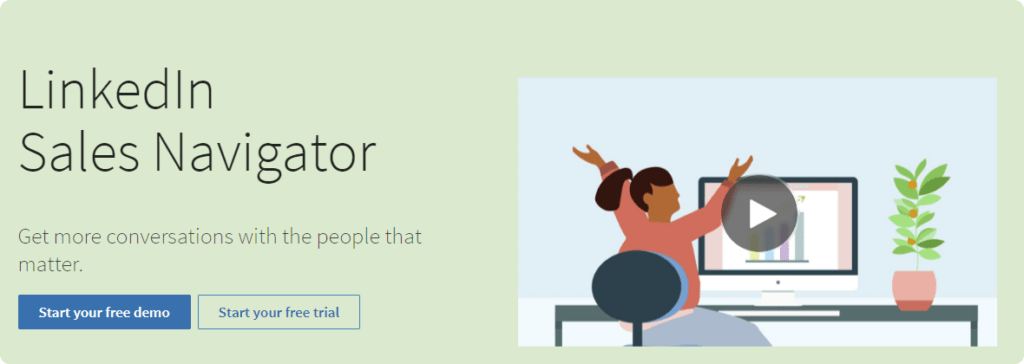
Advantages of LinkedIn Sales Navigator:
See, LinkedIn is the largest professional database out there with over 700 million users. LinkedIn is that an almost infinite data field, and Sales Navigator gives you access to it all.
Mainly, it has much more advanced segmentation capabilities than LinkedIn’s regular search feature.
Are there changes in your prospects? Sales Navigator informs you about them: promotions, job changes, company announcements, and more.
It also gives you the ability to follow prospects and see their updates.
Want more? Sales Navigator can be integrated with other CRM systems or automation tools like Scrab.in to supercharge your prospecting capability. Plus, LinkedIn benefits from you having Sales Navigator, so it will be much more lenient with you.
Challenges of LinkedIn Sales Navigator:
- Of course, the main barrier is the cost. It is a paid tool, which can be very limiting for small companies or freelancers.
- Then there’s the complexity. With so many functions and filtering options, it can be a bit overwhelming for new users to fully master the platform.
- Next, we have the dependency on self-updating. The information about prospects depends on them updating their LinkedIn profiles. If a user doesn’t update their profile regularly, the information can become outdated.
- It’s not the most effective tool in the world without automation. LinkedIn provides access to the data, but without an automation tool like Scrab.in, it becomes super tedious and impossible to optimize your time and money efforts. LinkedIn automation tools solve this issue.
Acquiring Third-Party Lists
This is basically about using lists that others have created and compiled and extracting value from them, whether the list is purchased or public (with the risks that entails).
How to strategically plan the acquisition:
Before buying a prospect list, you must be clear about what you hope to achieve with it. Are you looking to increase brand awareness, generate leads, or boost a specific campaign? Your goals will influence the type of list you need.
You might think I’m a bit insistent on the ICP, but believe me, understanding your ideal customer profile is key. It makes no sense to acquire a list full of contacts that don’t fit your ICP.
And finally, you need to know that not all prospect list providers are equal. Do some research to find reputable providers known for the quality and currency of their data.
Quality assessment and pricing considerations:
- It’s better to have a smaller, high-quality prospect list than a huge list of irrelevant or outdated contacts. Make sure the provider can demonstrate the currency and accuracy of their data.
- The prospect list should allow you to segment and target your communications effectively. The more segmentation, the more personalized your messages will be.
- Compare costs among different providers, but remember that the lowest price is not always the best deal. Consider the ROI.
- Ensure that the prospect list and the provider comply with relevant regulations such as GDPR to avoid potential penalties.
If you need to acquire a quality prospect list and want to ensure the highest quality, contact info@findthatlead.com.
Which one do I choose? Let’s see, but first, let me emphasize that all three might work for you, a mix of several, just one, or none—it all depends on your strategy and how you execute it. I would evaluate them in this order:
- Effectiveness: Evaluate this in terms of response rates and the quality of the leads generated.
- Cost-Quality: Analyze the ROI. Some may have a higher initial cost but yield higher quality leads and more long-term conversions.
- Scalability with your business: What works for a small company may not be suitable for a larger one or one that is rapidly expanding.
- Integration with tools you already have: Make sure that the prospecting method can be well integrated with your current systems and processes.
Deep Dive into Prospecting Tools
Demographic Data Providers and Tools
Demographic data providers offer good market information based on characteristics such as age, gender, income, educational level, and more. Data are crucial to understand whom you are selling to and how to personalize your sales approach.
Examples of Demographic Data Prospecting Tools:
- LinkedIn Sales Navigator: What to say about this tool that we haven’t said above? It is a beast that gives you access to pure and hard segmentation and valuable information to connect with decision-makers.
- ZoomInfo: ZoomInfo provides you with detailed and updated information on contacts and companies, including essential demographic data. It is a powerful tool for quickly identifying prospects, with functionalities that allow precise segmentation and access to direct contact data.
- FindThatLead: FindThatLead specializes in the generation of real-time emails, in addition to being an all-in-one lead generation tool, from prospecting to setting up cold email campaigns.
Additionally, it offers specific functionalities such as local lead discovery through “Local Business” and a Chrome extension that allows prospecting directly from LinkedIn, facilitating data collection and immediate contact with potential customers.
- LinkedIn & Scrab.in: The combination of LinkedIn with Scrab.in creates a powerful synergy for demographic prospecting. While LinkedIn offers a vast field of demographic and professional data, Scrab.in automates interaction processes and data collection on the platform. This synergy allows users to maximize their efficiency in prospecting, automating profile visits and lead generation.
Firmographic Data Insights
Exploring firmographic data is to understand the characteristics of companies, such as their size, industry, location, revenue, number of employees, and other relevant attributes. The tools mentioned above will also provide you with Firmographic Data Insights, but I also recommend you take a look at specialized tools like Crunchbase.

Crunchbase: This platform is particularly useful for obtaining detailed information about startups, technology companies, and fast-growing enterprises. Crunchbase provides data on funding rounds, investors, acquisitions, industry news, and trends that can be crucial for your prospecting strategy.
Use Crunchbase to identify companies in growing sectors, companies that have received recent investments (which may indicate expansion or innovation), and to better understand the ecosystem in which your prospects operate.
You can use these Crunchbase Data Insights in conjunction with other prospecting tools to enrich the list with emails.
Technographic Data Utilization
The use of technographic data is basically to analyze the technologies that companies use, which, apart from giving you another perspective on their behavior, preferences, needs, and pain points, helps you segment in a better way.
Technographic data tell you what software, platforms, tools, and digital technologies companies are using.
For example, if your product integrates well with certain platforms, you can focus on companies that already use them.
Highlighted Tecnhnographic Prospecting Tools
BuiltWith:
BuiltWith provides detailed information about the web technologies used by companies. You can see which sites use certain CMSs, analytics tools, e-commerce frameworks, and more.
This tool is useful for understanding technology adoption and can help you identify companies that could benefit from your products or services by complementing or enhancing their existing technological stack.
Then, you can take this list of companies extracted by BuiltWith to FindThatLead to enrich it and obtain their emails.
Wappalyzer:
Wappalyzer also provides insights into the technologies used by websites, including information on content management systems, marketing software, e-commerce solutions, and more. It can be used for competitive and market analysis, identifying which technological solutions are preferred by different sectors or company sizes.
NerdyData:
NerdyData is another technographic search and analysis tool that allows you to explore and discover the underlying technologies on websites. It is especially valuable for in-depth and specific research, enabling you to uncover market opportunities by identifying companies using technologies that are being discontinued or have low user satisfaction.
FindThatLead Technology Filter
For technographic data-based prospecting, FindThatLead offers a specific filter called “Technology” within Prospector, which can be especially useful for segmenting companies according to the technologies they use.
Behavioral Data for Intent-Based Prospecting
Behavioral (intent-based) data is pivotal in modern prospecting strategies. This type of data provides insights into the actions, interests, and behaviors of potential customers, enabling businesses to target prospects who are most likely to be interested in their products or services based on their online activities.
How?
Intent Signals: Behavioral data helps identify ‘intent signals’ which are actions taken by prospects that indicate their interest in a product or service. For example, visiting specific web pages, downloading whitepapers, or attending webinars can all be indicators of intent.
Predictive Insights: Businesses can predict which prospects are in the buying mode and prioritize them in their outreach. This approach ensures that sales teams focus their energy on leads that are more likely to convert.
Prospecting Tools and Methods to capture and utilize Behavioral Data:
- Bombora: Specialized in identifying purchase intent, Bombora monitors online activity across a variety of topics and products to determine buying interest.
- G2: Through its platform, G2 provides intent data by tracking how users interact with different product categories and reviews, which can indicate which companies are evaluating solutions like yours.
- Apollo.io: Apollo help you to find and connect with prospects and also incorporates intent signals, allowing sales teams to better understand and prioritize prospects based on their level of interest and research activities.
- 6sense: This platform uses artificial intelligence to process intent signals, helping to predict who is in the market to buy, when they are ready to make a purchase, and what products they are interested in.

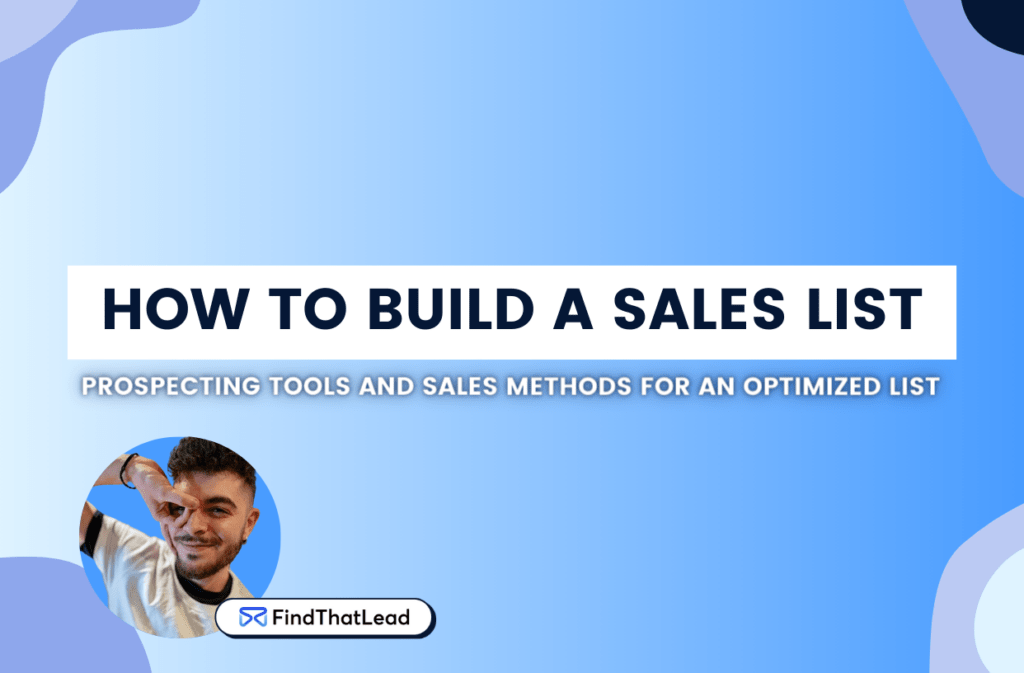
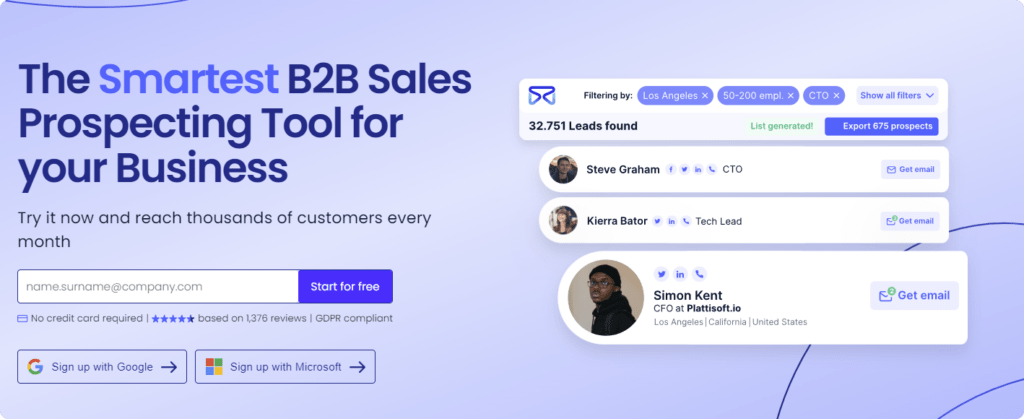
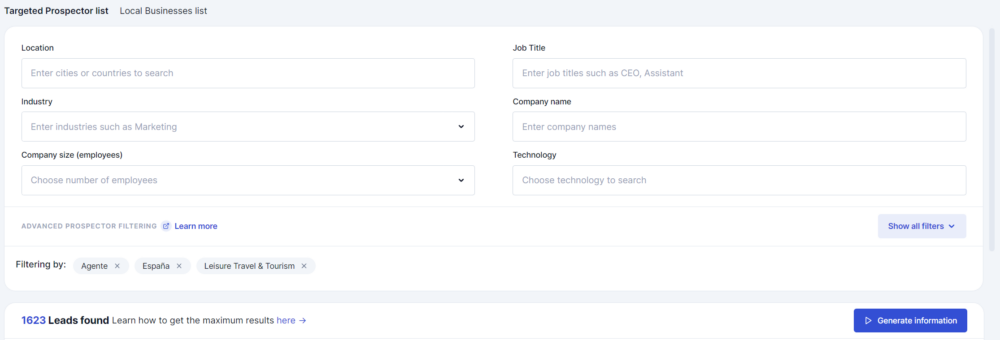

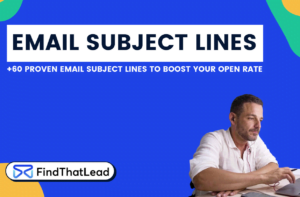



 BONUS:
BONUS: The Challenge: Join this free course and I guarantee that after 5 days you will have the necessary skills to start generating B2B clients Growth Hacking and Prospecting techniques.
The Challenge: Join this free course and I guarantee that after 5 days you will have the necessary skills to start generating B2B clients Growth Hacking and Prospecting techniques.